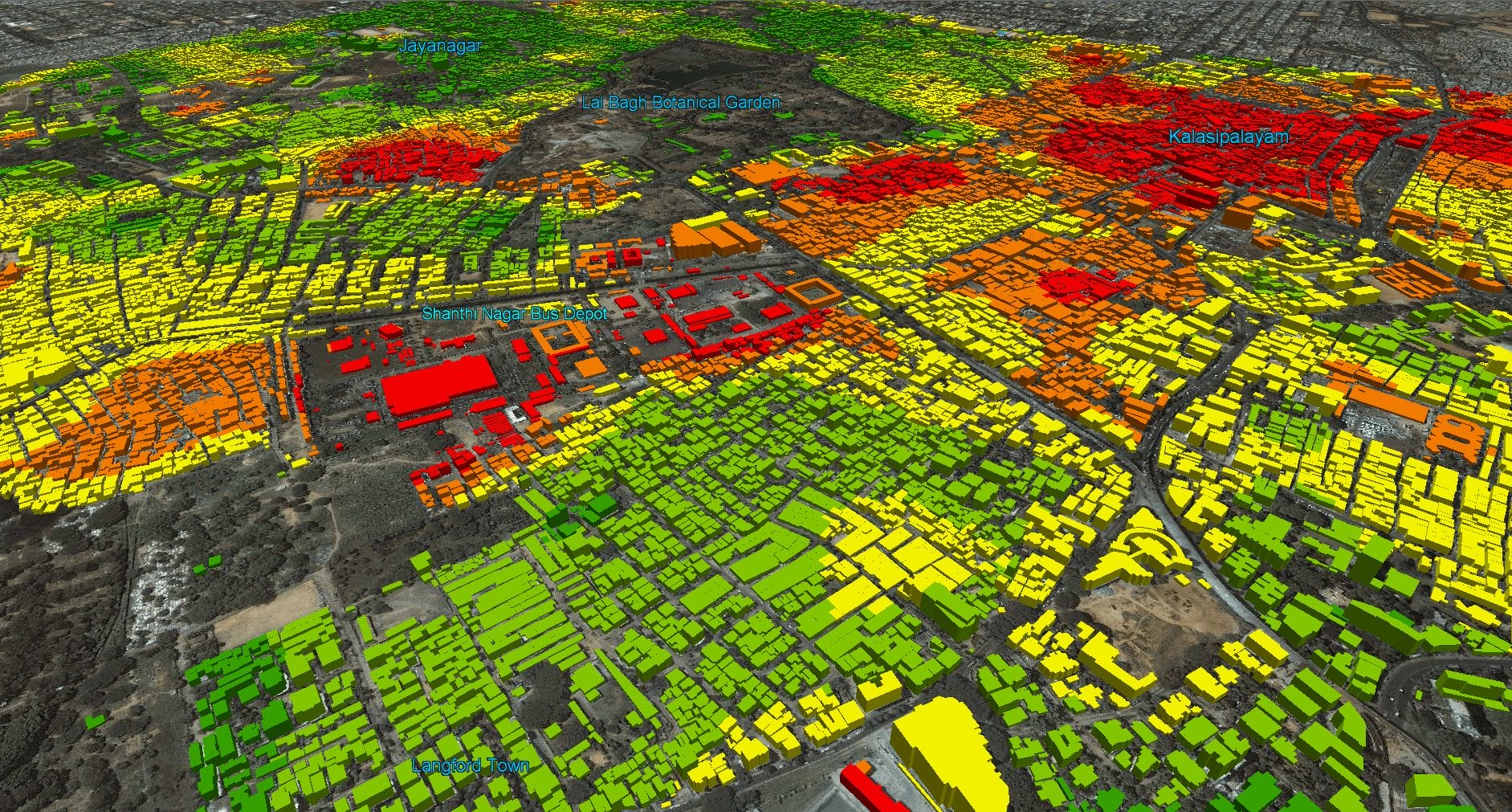35% of India’s population lives in big and small cities, and this number is expected to nearly double by the year 2050. These urban environments are increasingly characterised by high population density, ubiquitous and overwhelming concrete construction, inadequate water, sanitation and waste infrastructure, a general lack of green spaces and the commons as well as vanishing biodiversity.
Our existing patterns of urbanisation are also directly releasing greenhouse gases (GHG) into our environment; India’s construction sector alone contributes approximately 25% to our GHG emissions, according to the UNFCCC biennial report on India (2021).
Plus urban areas have been identified as high-risk locations for extreme climate events, as per the IPCC AR6 (2022) report, notably an increase of temperature by 20C from the urban heat island effect. This is considered one of the factors for the extreme heat waves we have been experiencing across India these last few weeks. What’s more, India generates a whopping 12 million tonnes of Construction and Demolition (C&D) waste and recycling a minuscule 1%.
Read more: Bengaluru’s changing rainfall patterns: expert points to climate
Connecting urban ecology, construction and climate change
On 19th May, a number of organisations and individuals got together to organise a convening to understand the challenges of existing practices and find a way to reimagine and reshape our urban ecology.
The event on sustainable construction brought together cross-sectoral experts working on urban ecology, environmental sustainability, design and construction, materials, and policies. The presentations and conversations tried to capture the current scenario of the construction industry in India and its implications on urban ecology.
Insights on the role of construction
The sessions clearly brought out the why of sustainable construction – the impact of the industry on the impact on nature, emissions and climate change, C&D waste generated, as well as the political economy it sustains.
Dr Champaka Rajagopal spoke about Bengaluru’s unending outward growth. Recent trends in Bengaluru include aspirations for high-end luxury homes, especially post COVID and this, in turn, puts pressure as public infrastructure cannot keep pace with the growth. This also leads to a decrease in groundwater, increase use of cars and two-wheelers and an increase in air pollution. Sriram Kuchimanchi pointed out the built environment has contributed to an 88% decrease in vegetation, a 79% decrease in water bodies and to about 1004% increase in paved surfaces in Bengaluru.

Vaishnavi Shankar highlighted the climate risks in India and said heatwaves are estimated to increase 75-fold in a business-as-usual scenario; over 140 cities in India are prone to high risk of flooding and around 77 cities in the coastal region of India are prone to frequent cyclones. In 2020, ten of our cities experienced intense flooding. She spoke about the impacts of disasters on the built environment, including losses, damages, economic stress and sociological and psychological stress and the need to look at climate mitigation and adaptation, from an infrastructure perspective.
Read more: Heat, dust and floods: What’s up with Bengaluru?
While there are innovative and alternative choices available, these approaches have been adopted in a piecemeal and fragmented manner. It is time to start having conversations and engagements about holistic approaches.
Making this happen requires changes in the way we do things. Chitra Vishwanath called on the need to reimagine places of living and working and emphasised the need for a new human rights approach. Dr Bhakti Devi spoke about community-led infrastructure and said that urban neighbourhoods can be transformed if residents owned the process of envisioning, and planning them. Sathya Prakash Varanashi spoke about the need to introspect ecology and look at design not as a way to decide how to build, but to decide how we want to live.
Going forward, the goal is to create a platform of exchange for innovations in sustainable construction.
Panels and presentations
Click here for the presentations, hosted on Open City.
Panel 1: Cities and Ecology Watch the panel
Moderated by Dr Shaila Bantanur (BMS School of Architecture)
- Addressing Bengaluru’s unending outwardly growth: Downgrading buyer’s demand and developer’s motivations for supply by Dr Champaka Rajagopal (Azim Premji University) Click here
- The climate is changing, why aren’t we? By Vaishnavi Shankar (NIUA) Click here
- Interlinkages between blue, green and grey infrastructures by Shreya Nath (ATREE) Click here
- Community-led infrastructure: Retrofit planning to make water positive neighbourhoods by Dr Bhakti Devi (Rishihood University) Click here
Panel 2: The Construction industry: tools, techniques and sustainable transitions Watch the panel
Moderated by Dr Chandrashekar Hariharan (IGBC)
- Urban construction and environmental impact by Sriram Kuchimanchi (Smarter Dharma) Click here
- Challenges and roadblocks to sustainable practices in the construction process by Ajay Koshy (Brigade Group) Click here
- The Q&A method to Regenerative Architecture! by Manu Gopalan (Sacred Groves) Click here
Panel 3: Building materials: impact, emissions and green alternatives Watch the panel
Moderated by Maya Chandrasekaran (Green Artha)
- The social, ecological and economic impact of cement-driven construction, with respect to sand mining by Siddharth Agarwal (Veditum Foundation) Click here
- Technologies for low carbon lean construction by Dr Nikhil Bugalia (IIT Madras) Click here
- Importance and role of eco-levelled products in sustainable construction by S Karthikeyan (IGBC) Click here
Panel 4: Impact of architectural design on environmental sustainability Watch the panel
Moderated by Meera K (Citizen Matters)
- Tyranny of small decisions by Chitra Vishwanath (Biome Environmental Solutions) Click here
- Climate change, energy and urban resilience by Nirmita Chandrashekar (Selco Foundation) Click here
- Challenges and roadblocks in implementing environmental thinking by Naresh Narasimhan (Venkataramanan Associates) Click here
- Introspecting ecology by Sathya Prakash Varanashi (Sathya Consultants) Click here
With inputs from Meera K and Pinky Chandran.